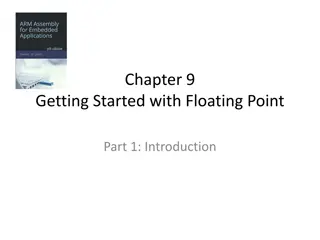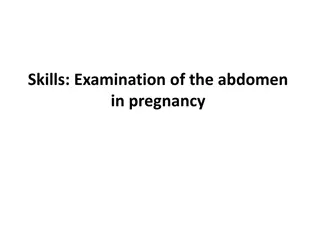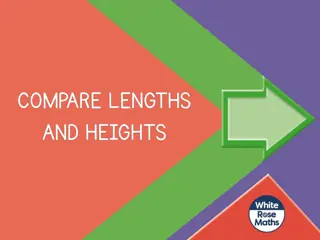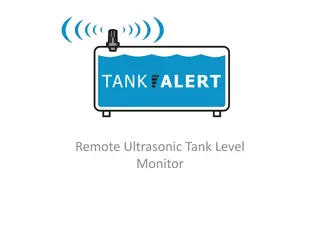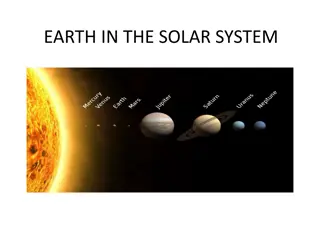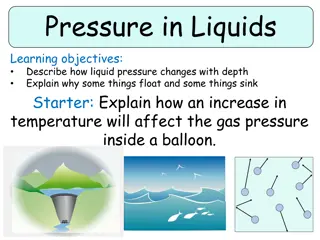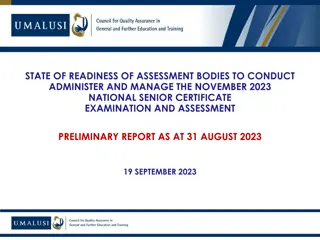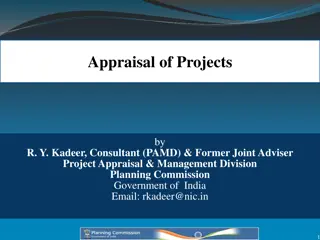Understanding Metacentric Height of Floating Bodies
Metacentric height is a crucial measure of a floating body's stability, such as a ship. It refers to the distance between the center of gravity (G) and the metacentre (M). The magnitude of the righting couple and the calculation methods for metacentric height are discussed in detail. Proper design considerations for ensuring stability in ships and floating vessels are highlighted. Various formulas and principles related to metacentric height determination are explained for practical understanding.
Download Presentation

Please find below an Image/Link to download the presentation.
The content on the website is provided AS IS for your information and personal use only. It may not be sold, licensed, or shared on other websites without obtaining consent from the author. Download presentation by click this link. If you encounter any issues during the download, it is possible that the publisher has removed the file from their server.
E N D
Presentation Transcript
Metacentric Height of a Floating Bodies Dr. J. Badshah S. G. Institute of Dairy Technology, Patna -14 (Bihar Animal Sciences University, Patna)
Metacentric Height metacentric height is a measure of the statical stability of floating Body such as ship. The The distance between centre of gravity G and metacentre M i.e. GM is metacentric height on rolling the stability body by a small angle along the longitudinal or transverse axis. For a ship to be stable, the metacentric height must be positive. The magnitude of metacentric height is obtained as under: (a) If G is above B, MG = BM BG (b) If G is below B, MG = BM + BG The magnitude of the righting Couple = W (MG) Sin which determines the stability of ship. To avoid large no. of oscillation, it is desirable that the metacentric height should not be very large. It is therefore, a compromise has to be made between these two.
Metacentric Height For proper design of ships or other floating vessel, care should be taken that the metacentre is above the centre of gravity for all angles of heel which may be encountered in its use. As a floating body can be tilted in any direction, it is required to consider tilting about both the longitudinal (ROLLING) axis and transverse (pitching) axis. Usually the tilting about the longitudinal axis is more critical.
Calculation of Metacentric height If the ship rotates about point O, but for small angle ,It may be assumed to rotate about M. The volume of the wedge is moving its position and therefore the weight W of the wedge is given by: W = L b/2 . b/2 tan As the wedge shifts its position, its centre of gravity moves by a distance 2/3 b. The moment caused by the movement of the wedge is M1= W 2/3 b = L b/2 . b/2 tan x 2/3 b = Lb3/12 tan = I tan , where moment of Inertia I =Lb3/12
Calculation of Metacentric Height The moment M1must be equal to moment M2caused due to movement of the upward thrust from B to B1. If V is the volume of water displaced by the ship, U = V = weight of the ship The movement caused by movement of upward thrust by a distance BB1M2 = V . BB1 = V . BM tan ( because BM/BB1 = tan ) When, M1 = M2 I tan Therefore BM = I /V and MG= BM BG, if G is above B and If G is below B, Metacentric height MG = BM + BG If the sides are not vertical and plan of the ship is not rectangular, divide the plan into small rectangles and the individual moment of inertias of all small parts are added to get the value of I. or I = k Lb3/12 = V . BM tan





